Featured Photo Above:
Combined 1903 World Series Photo: Pittsburgh Pirates and Boston Pilgrims
(Color Restoration by Chris Whitehouse of Mancave Pictures)
Baseball History Comes Alive Now Ranked As a Top Five Website by Feedspot Among All Baseball History Websites and Blogs!
(Check out Feedspot's list of the Top 35 Baseball History websites and blogs)

Guest Submissions from Our Readers Always Welcome! Click for details
Scroll Down to Read Today’s Essay
Subscribe to Baseball History Comes Alive for automatic updates. As a Free Bonus, you’ll get instant access to my Special Report: Gary’s Handy Dandy World Series Reference Guide!
1950s Cub-Sox Photo Gallery
Click on any image below to see photos in full size and to start Photo Gallery:
Reflections on Chicago Baseball in the 1950s
To those of us who cut our baseball “teeth” in the 1950s in Chicago, we initially had very little awareness that we were living in the Golden Age of baseball—The Fifties—and that New York, with its three great teams, was the center of the baseball universe.
Our baseball world at the time centered on our two Chicago teams, the Cubs and the White Sox. Sure, we all have fond memories of listening to the World Series each year over the intercom of our grade school, but I think we had very little appreciation of what actually was happening in the larger baseball world of New York.
While early on we may have followed the exploits of both teams, by the end of the decade our baseball loyalties had cemented around either one team or the other. There was no middle ground. Although we were all North siders, our circle of friends was pretty much equally divided between the two teams. And virtually all those loyalties remain in place today.
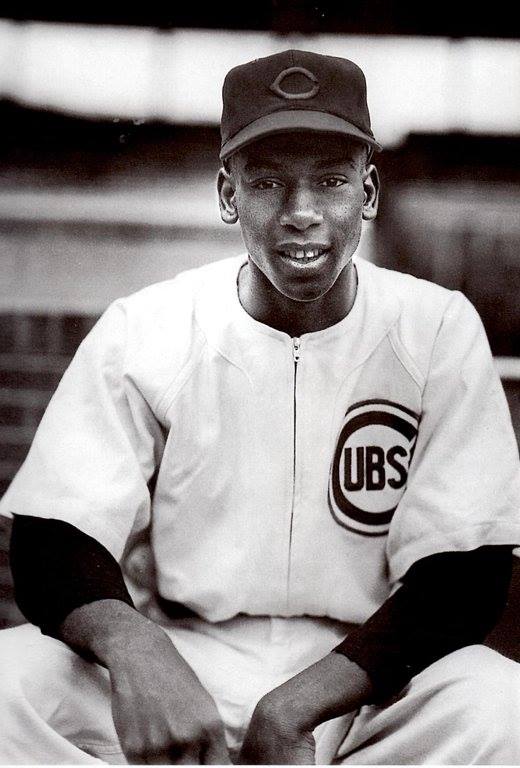
As did many of my friends, I became a Cub fan. Some of the fondest and earliest memories from my youth involve sitting on my grandfather’s lap in the 1950s watching a Cubs Sunday doubleheader on the old black-and-white TV. Little did I know that years of futility lie just ahead for a young fan just starting out on a lifelong love affair with baseball and the Cubs!
About the same time, many of my other friends, including my classmate, Jay Walsh (who, I’m happy to say, is a regular reader of my Baseball History Comes Alive website) became Sox fans. Of course, at the time, we didn’t realize how fortunate we were to live in a city with two major league teams. The silly back-and-forth “Who’s better, Cubs or Sox?” arguments later became fond memories from those long-ago days.
Reflections…
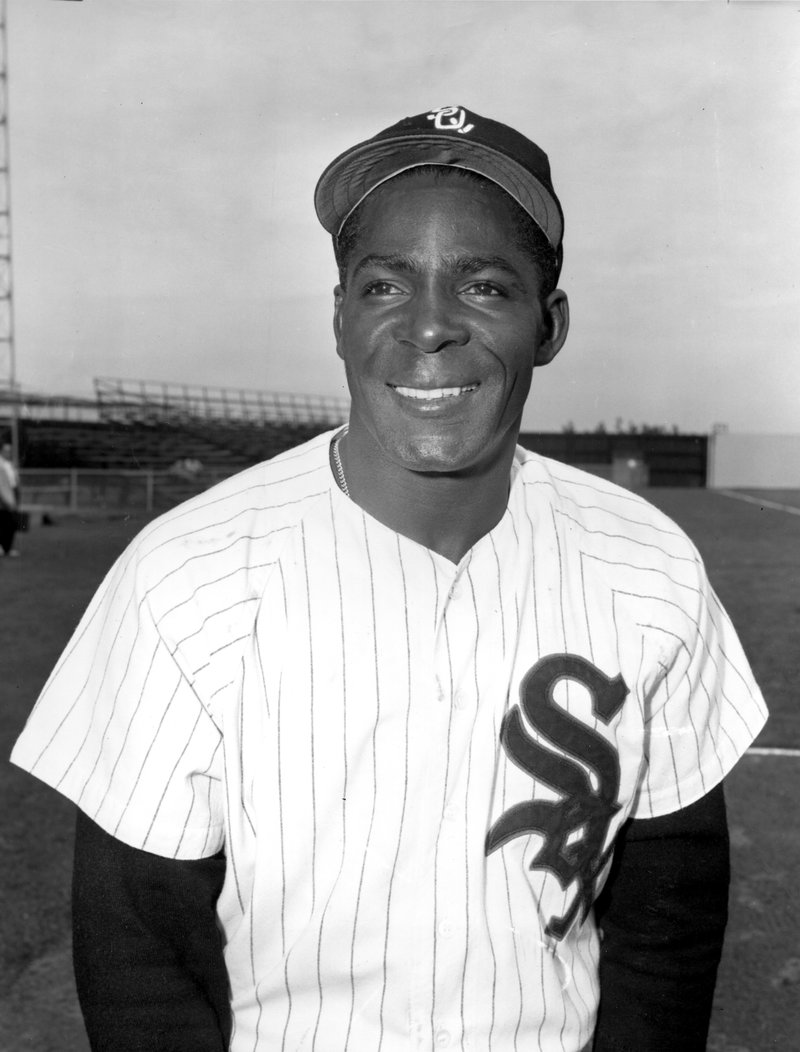
I thought it might be fun to ask Jay to share some of his reflections on growing up a White Sox fan in the 1950s. I concur with many of his sentiments. We both agree we were very fortunate to have been raised in a two-baseball-team town. Baseball became a huge part of our youth. While fans in other cities had to settle for the Game of the Week broadcasts, we were saturated with major league baseball daily on local TV. Plus, we got to know players from both the National and the American Leagues. And of course, All-Star games caused the loyalties to really harden, with the “Who’s better?” arguments often turning bitter.
First, here are some interesting thoughts Jay shared about growing up a White Sox fan in the 1950s:
It sure was great to grow up in a two-team baseball town! We just took it for granted. The Cubs were beloved, even back then. But nobody thought the Cubs were better than the White Sox. I loved going to Wrigley Field more than Comiskey Park. It was, and is, a great park to watch baseball. We needed $1.00 for the bus and El train and grandstand seats, coming home with $.06 change! It cost $.15 more to sit in the bleachers back then. We got to see Ernie Banks and all sorts of great National League players from Mays to Musial to Robinson (Jackie and Frank) to Snider and many others.
The White Sox in the late ’50s were the Go-Go Sox. Even as kids, we knew they couldn’t hit but, oh, the speed, defense, and pitching were great. Aparicio and Fox were a team in the field and on offense. Minoso was spectacular everywhere. We hated it when Minoso was traded for Al Smith and missed the 1959 pennant. We were invested emotionally and rose and fell with the team’s fortunes.
WGN broadcast all the home games and some road games so we were always up to date. I still recall watching the Sox clinch the pennant in Cleveland against the team formerly known as the Indians. I had to stay up late (as a ten-year-old) to see the game. As kids, we blamed Lopez and the goofy LA park for the White Sox’s loss to the Dodgers. Maybe our youthful conclusions weren’t far off!
Jay’s actually being kind. A common refrain back then from White Sox fans was that while the White Sox were the much better team, the Cubs undeservedly got most of the media attention. No one has ever been able to pinpoint the reason. Was it because of WGN? White Sox fans thought Jack Brickhouse favored the Cubs. Was it Wrigley Field? Or was there some other, unexplained reason? To help settle the argument, I decided to go back and examine the historical record.
To Cub fans: It ain’t pretty!
First of all, let’s look at the Cubs’ win/loss record. From 1950-1959, the Cubs went an unimpressive 671/865 (.436), finishing an average of 6.5 each year in the eight-team National League. The only thing that kept them from finishing last in many of those years was that the Phillies were actually worse. They had no first-division finishes in the entire decade. In attendance, they averaged 869,000 each year with only one year drawing a million fans. Ernie Banks was their only real star (Ron Santo and Billy Williams didn’t arrive until 1960). The rosters were filled with over-the-hill players and guys who had their best years on other teams. Overall, not a good decade for the Cubs.
The White Sox: A Premier Team
The White Sox, on the other hand, were one of the premier teams (outside of New York) during the decade. From 1950-1959, they went 847/620 (.577), with an average finish of third each year. They had nine first-division finishes, which included a pennant (1959), two second-place finishes, and five third-place finishes. Only the dominance of the Yankees in the American League kept them from winning more pennants. They were unquestionably the more popular team, as their average attendance each year was 1,129,200, averaging over 260,000 more each year than the Cubs. The Sox had plenty of legitimate stars: Nellie Fox, Billy Pierce, Minnie Minoso, Luis Aparicio, Larry Doby, and Early Wynn.
To quote Harry Caray, “Honesty compels me to say…”
I have to conclude that the White Sox were the better, more popular team in the 1950s, even if the Cubs generated more media attention. Although the White Sox’s overall team dominance continued well into the 1960s, questionable marketing decisions slowed down the expansion of their fan base; while the Cubs eventually hooked their star to superstation WGN and later, Harry Caray. The marketing of “Beautiful Wrigley Field” became the main fan attraction in an era of miserable teams.
So the arguments from those long-ago days can now be settled: Bragging rights go to the White Sox!
Gary Livacari
Subscribe to our website, “Baseball History Comes Alive!” with over 1200 fully categorized baseball essays and photo galleries, now closing in on the one million hits mark with 890K hits and over 700 subscribers: www.baseballhistorycomesalive.com
Stats from Baseball-Reference.com
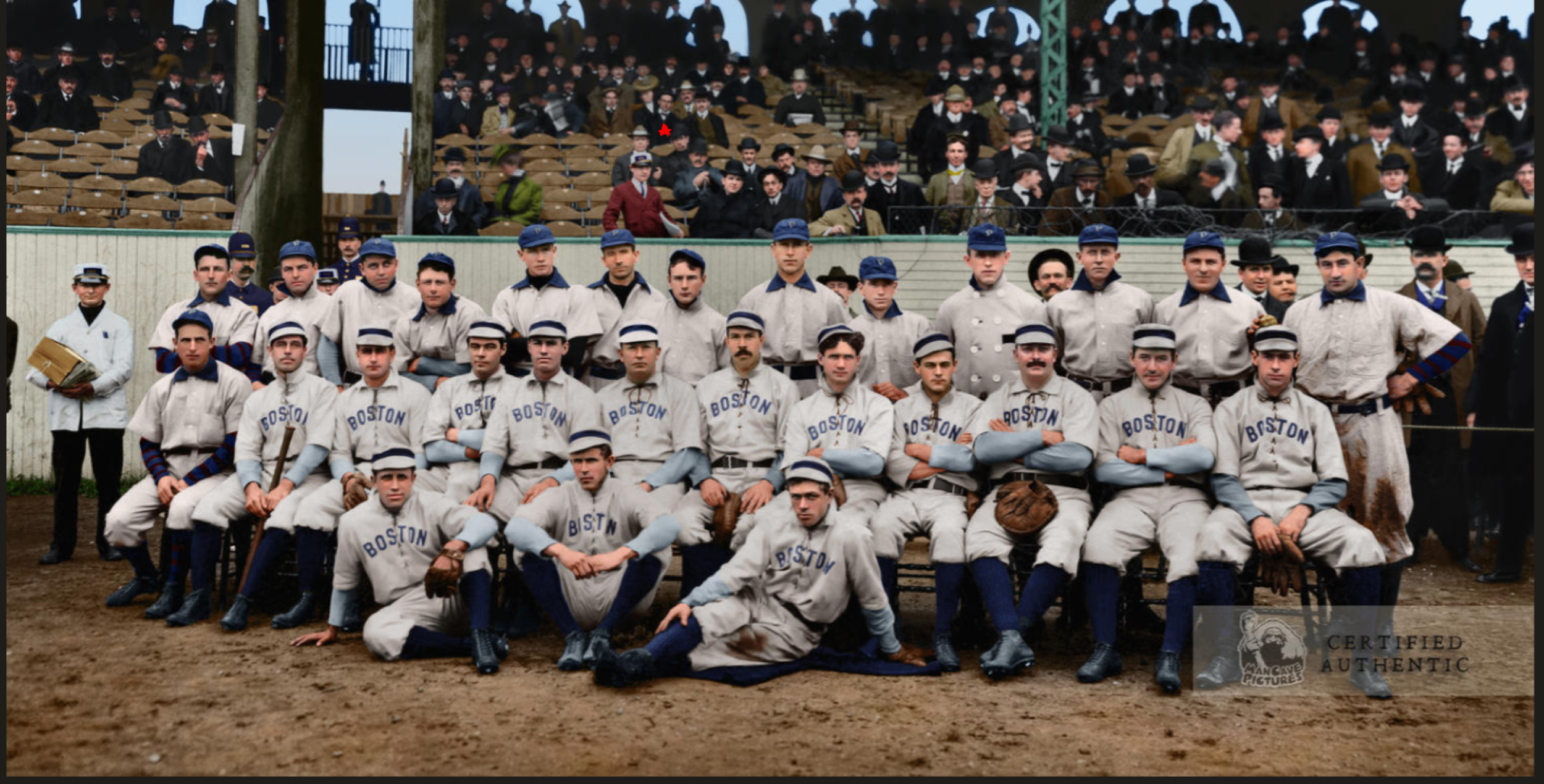
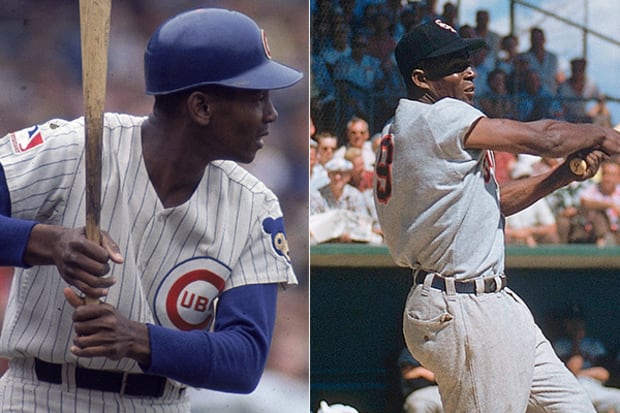
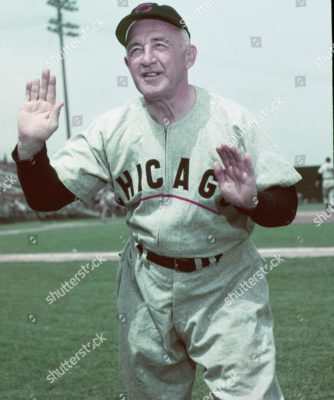
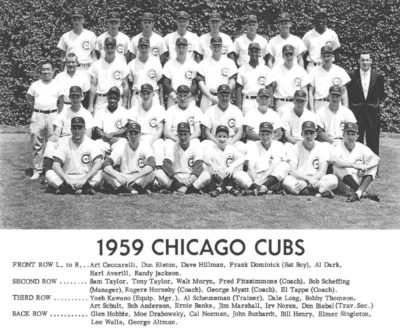
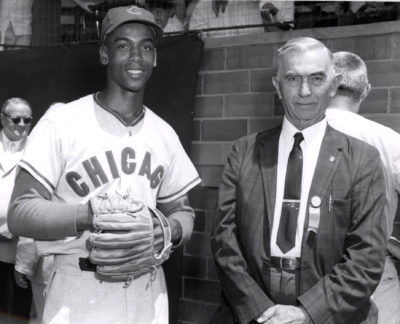
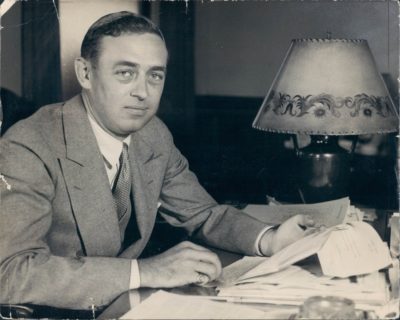
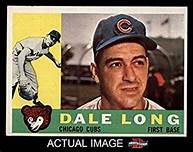
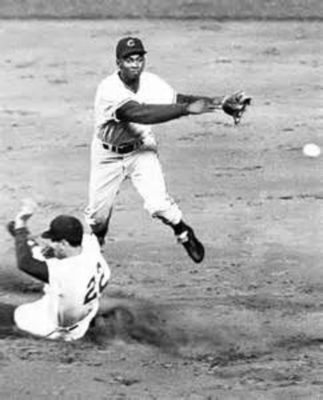
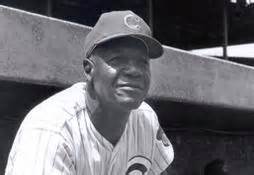
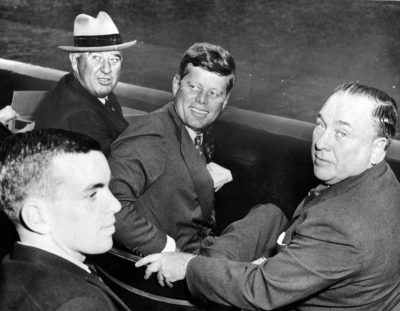
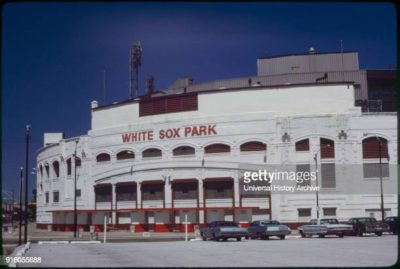
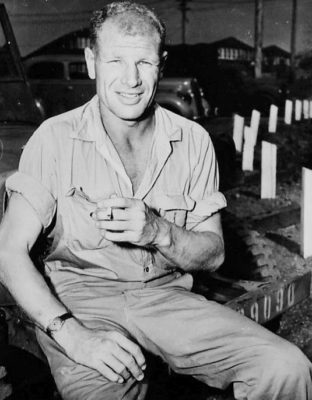
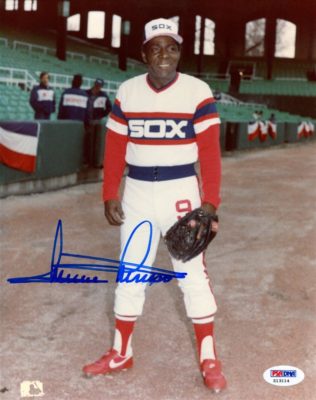
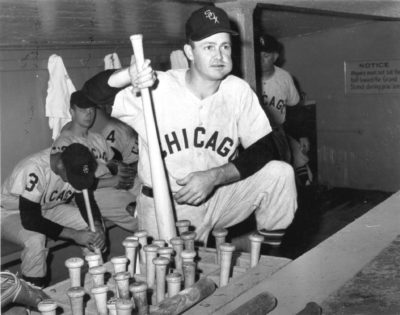


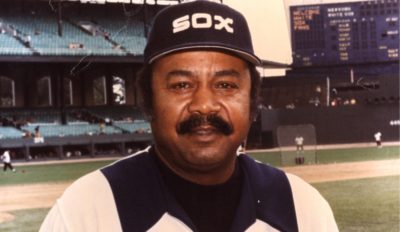
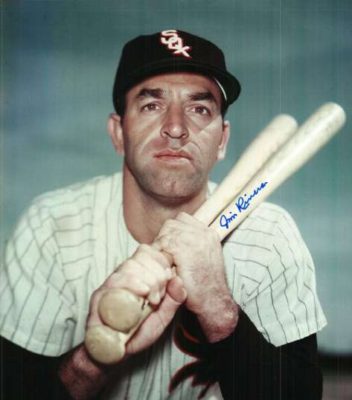
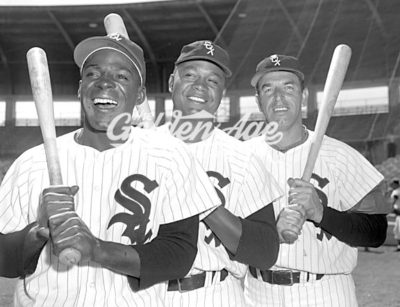
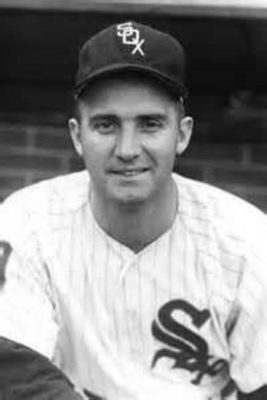
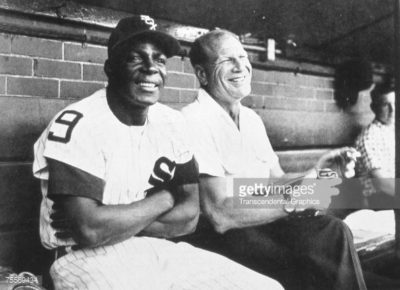
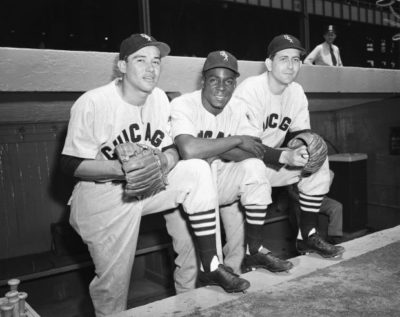
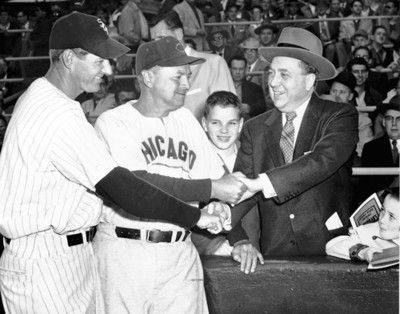
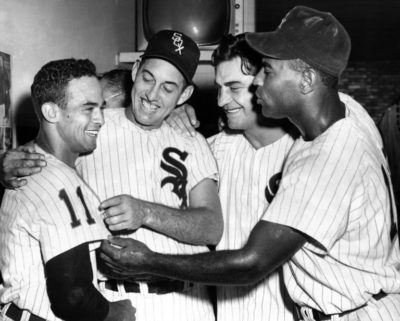
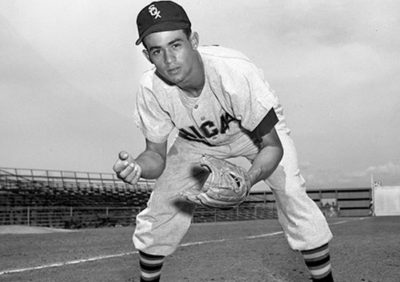
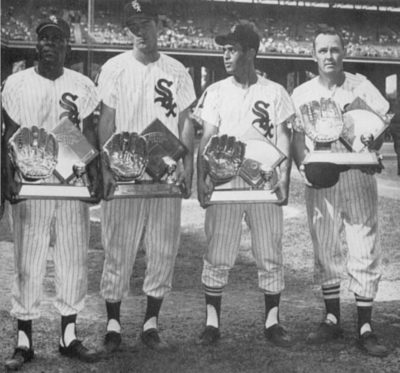
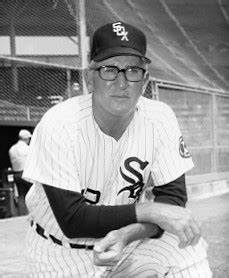
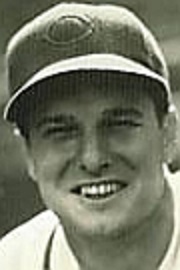
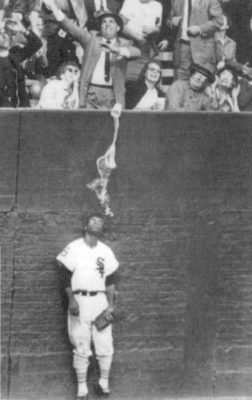
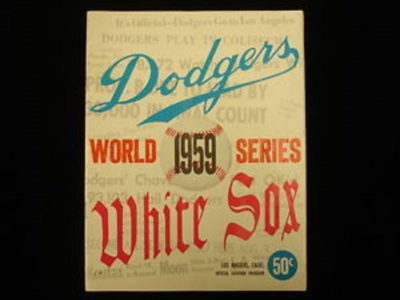
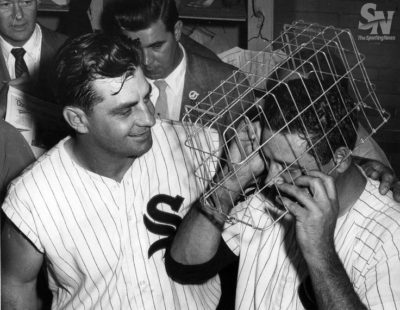
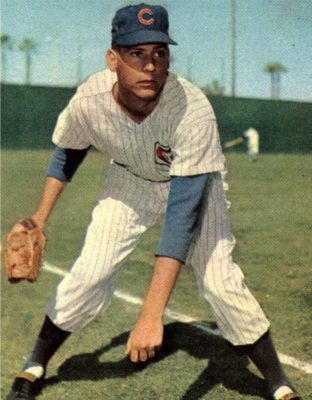
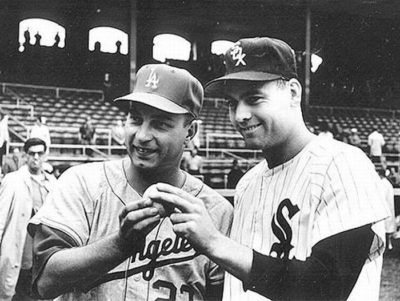
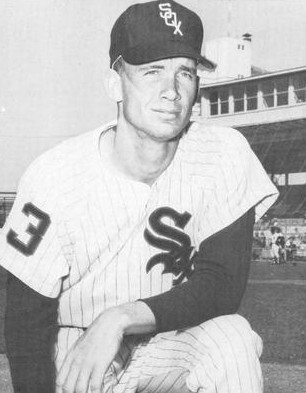
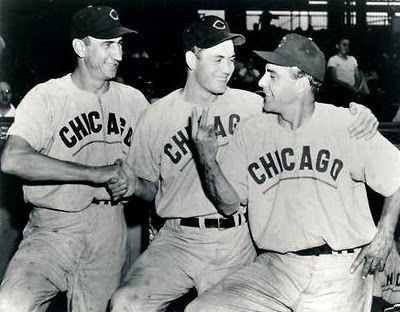
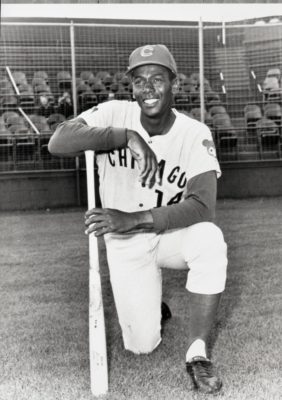
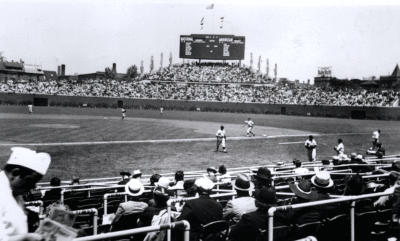
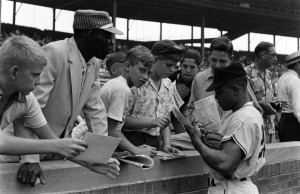
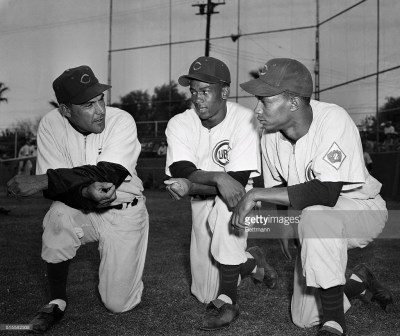
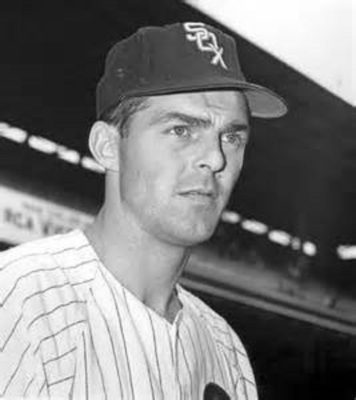
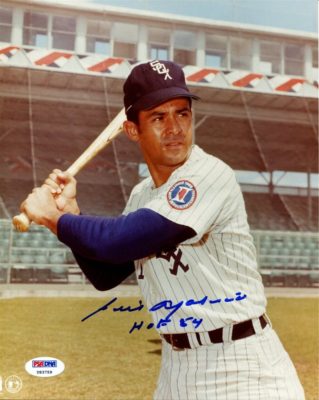
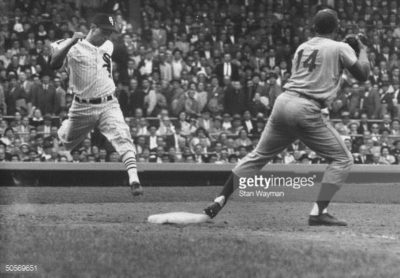
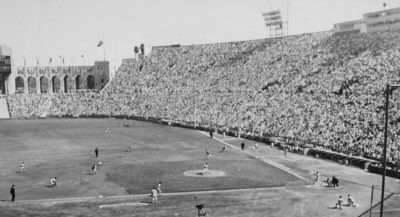
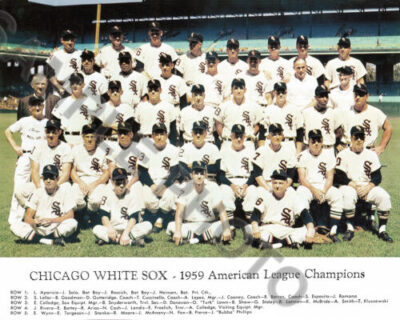

Gary, the book is on its way. After reading the above, please read the preface. You and I are on the same page.
For a lousy team in the 1950s, the Cubs had three MVPs over the decade.
Look forward to hearing from you.
Rich Letarte
Enjoyed your article on 1950’s Chicago baseball. Great memories! Thanks for letting me participate, Gary.
Sure Jay, glad to do it…thanks!
In 1959 photo John F. Kennedy is a senator. He was elected in Nov., 1960 & inaugurated on Jan. 20, 1961.
My memories of ’50s Chicago baseball:
I didn’t meet a Northsider Sox fan until I was in college. Wrigley Field was our preferred destination because it was perceived as better kept and in a safer neighborhood. Plus, games were played in glorious sunshine, so you were always home in time for dinner.
Comiskey Park generated better crowds by playing many night games, having a larger seating capacity and better team, and, most importantly, benefiting from three visits a year from the Yankees. That was 11 games a year of thirty to forty thousand fans. The Cubs had no comparable drawing card in the NL. No NL team outside New York City did.
Jack Brickhouse lived and died with the Cubs. The Sox were his “other” team. The day he retired was the day the music died.
Thanks Andy, you raise some really interesting points. I’d have to agree with all of them.
Great article; loved it! I grew up on Long Island, and 1959 was the first year I really starting following baseball. Big year in NY; the Giants and Dodgers left, and the Yankees didn’t win the pennant; the baseball world in NY was all upside down.
Yankees Stadium (the original) will always be my favorite, but I loved Comiskey and Wrigley; great atmosphere and great places to watch baseball. I always enjoyed watching the out of town scores when I was at the games.
I didn’t know that Hornsby was a coach for the Cubs, and I surprised myself recognizing about 15 of the players in the Cubs photo (even Yosh!). I always wondered if they had free agency back then if Ernie would have stayed with the Cubs or signed with a better team. It’s a shame he never got to play in the World Series. (Don’t get me wrong; I’m glad he stayed with the Cubs!) I wish the Sox photo was better and the players were identified; without looking them up, I can’t think of more than maybe a dozen off of the top of my head.
Was it in the ’60’s that the Cubs went to the rotating managers? Even as a kid, I thought that was dumb.
With teams today regularly drawing well over two million fans, I do remember attendance back in the ’50’s and ’60’s was very low. It seems like most teams only had large crowds on holidays and doubleheaders (and even those were, many times, on holidays). Of course, back then, from start to finish a DH wasn’t much more than 5 hours, if even that much.
Keep these types of articles coming (and the great catches series!); brings back lots of memories for this older fan; reminds me of the game that I used to love. (I watched maybe 8 innings total of this years Series; the game just isn’t the same- does anyone know the strike zone anymore? Even the announcers get it wrong watching the replay! No, it DID NOT catch the corner of the plate!)
Thanks Steve…you raise a lot of great points. I upgraded the White Sox team pic, although you might need a magnifying glass to read the names. Also, since you mentioned Rogers Hornsby, you might enjoy reading my article about the time I met him shortly after he finished his tenure as a Cub coach: https://wp.me/p7a04E-8yG. Anyway, thanks again!
Gary-Thanks for the new Sox picture; I did get out the magnifying glass and recognized 14 of the names. As in Chicago, growing up in NY, especially after the Mets arrived, we were lucky to get hundreds of TV games every year, in addition to listening to the games on the radio. We knew EVERYTHING there was to know about all of the players, and had some great announcers to listen to (Mel Allen, Red Barber, Phil Rizzuto, Ralph Kiner, Lindsay Nelson, and Bob Murphy)
I grew up on the Pennsylvania border and the local radio covered the Yankees and that was my boyhood team in the late fifties and early sixties. Broke my heart when Chicago beat out the Yanks in 59 but I rooted for the Sox in the World Series. In 1960 I was a worried Yankee fan as Chicago seemed to improve its squad by acquiring Minnie Minoso, Roy Sievers, and Gene Freese, big hitters all. I didn’t realize then that Chicago traded away its future in those deals getting rid of the likes of Earl Battey, Johnny Romano, Norm Cash, Don Mincher, and Johnny Callison for players who were about finished. What were they thinking? It seemed like the Yankees always traded for young players like Maris, Clete Boyer, or Ralph Terry, while other teams went for players who were on the downside of their careers. My uncle lived in Chicago in the sixties and I enjoyed visiting and we always took in a game at Wrigley or Comiskey, he was a White Sox fan. Great memories. Great blog Gary!
Thanks Kevin!
Gary:
I was fortunate enough to have a great-uncle who was a retired firefighter who lived on the first floor of our 2-flat. Every year without fail he would take me and his grandson to a Sox-Yankees game, and on occasion it would turn out to be a Sunday doubleheader! We got to see all the great Yankees from that era- Mantle, Ford, Berra, Richardson, Kubek, Moose Skowron, Howard, McDougald. Even Marv Throneberry was with them in the late 50’s before he became an Oriole and a Met!
The Sox were much more exciting than the Cubs were back then.
Thanks for the article!
Thanks for checking in Mike! Great remembrances!
Billy Pierce trade one of the best ever!
I was thrilled to shake hands with Dale Long in Ft. Myers Florida at a spring training game.
Love the Chicago baseball history!
Thanks Joe!
Gary, as a red hot Giants fan until they moved to the coast–and even then still sustaining some interest for a couple of seasons with Les Keiter’s amazing recreations on radio–the Cubs and White Sox were only of tangential interest. Except when the former played the Giants. Those games at Wrigley were exciting with that crazy, unpredictable wind!
Your devotion to making this site the only place to be for a baseball fan is always evident. But where did you come up with those Cubs statistics in the 50’s? In 1950, they finished 7th, 26.5 games behind the Phillies The first division was: Whiz Kids, Dodgers, Giants, Braves. Pirates were last. (The Jints, under Leo, went 50-22 over the last half, with Maglie, Jansen and a revamped Jim Hearn forming a formidable “Big Three.” Just had to throw that in).
In 1955, The Cubbies were 6th, 26 games behind Brooklyn, who were followed by the Braves, Giants and Phils. St. Louis was a notch above the last place Pirates (again).
Captain Livacari, has the strain of command taken its toll?
Best, Bill
Haha! Thanks for the catch! In a couple of those years, as you pointed out, I mixed up the rank in attendance with the rank in the standings. So there were no first-division finishes for the entire decade and an average finish of 6.5. So they were actually worse than I originally stated! Hard to believe that the Phillies were even worse than them!
Perfection is overrated-a slightly flawed leader is more lovable anyway, Gary.
Considering that the 1950’s were truly the Golden Age of Baseball I found it interesting or maybe just weird that between 1950 and 1961 the American League hit leader was a member of the Detroit Tigers; George Kell (1950, 1951), Harvey Kuenn (1953, 1954, 1956, 1959), Al Kaline (1955), Norm Cash (1961), or a Chicago White Sox, Nellie Fox (1952, 1954, 1957, 1958), Minnie Minoso (1960). No Detroit player has won the hit title since and only two Chicago players have led the league since; Lance Johnson (1995), Jose Abreu (2020). What are the odds? And why?
Wow…that is interesting! Thanks!